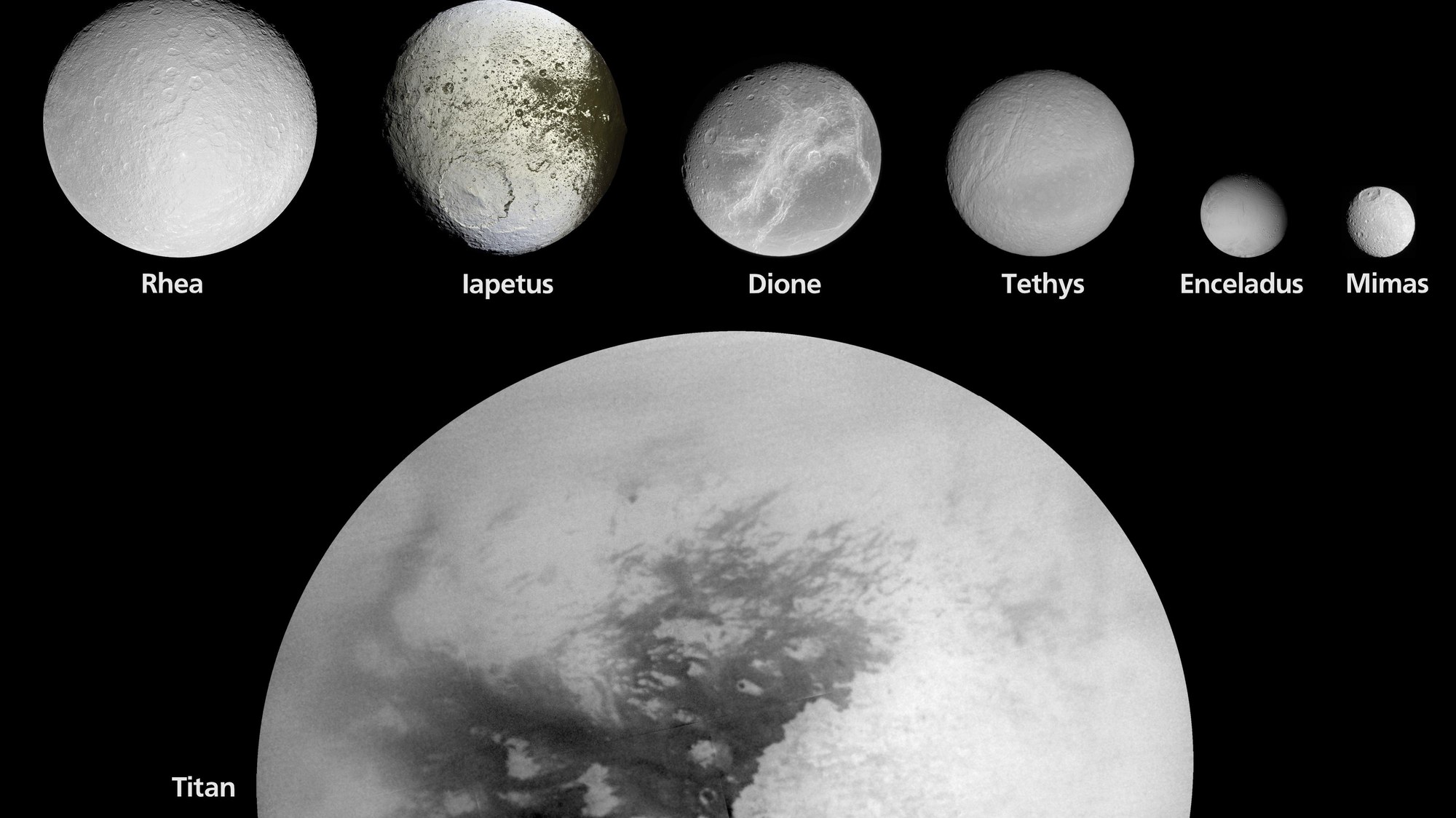The 16 largest moons of Saturn shown to scale
The 16 largest moons of Saturn shown to scale
The four largest gaseous planets Jupiter, Saturn, Uranus and Neptune are frequently described as 'miniature solar systems' because numerous moons of various sizes and characters orbit them. Currently, the largest number of satellites can be founded around Saturn – in 2009 the International Astronomical Union (IAU) counted 61 moons.
Although most of the moons only have diameters of a few kilometres, with Titan, Saturn is orbited by the second largest moon in the Solar System at a distance of something over 1.2 million kilometres. Its diameter of 5,150 kilometres is significantly greater than that of the Earth's moon (3,476 kilometres). As a result of its size and mass, Titan is able to retain a dense atmosphere of nitrogen and gases such as methane and ethane. It displays some similarities with the early atmosphere of the Earth. This made Titan one of the most interesting objects in planetary research and the destination of the European Huygens atmospheric and landing capsule, which landed on Titan on 14 January 2005. Only at wavelengths close to infrared (such as in this image) or when flying over its surface can coarse structures be identified on cold moon, whose surface is at a temperature of minus 180 degrees Celsius.
Saturn's large moons also include Rhea, Iapetus, Dione, Tethys, Enceladus, Mimas, Hyperion and Phoebe. The DLR Institute of Planetary Research in Berlin is creating the up-to-date atlases and maps of these moons as part of the Cassini project. The smaller moons shown here – Janus, Epimetheus, Prometheus, Pandora, Atlas, Helene and Telesto – were imaged as part of the Cassini mission during non-targeted flybys, sometimes at great distances. All of them are located in gaps between Saturn's rings or slightly outside them.

